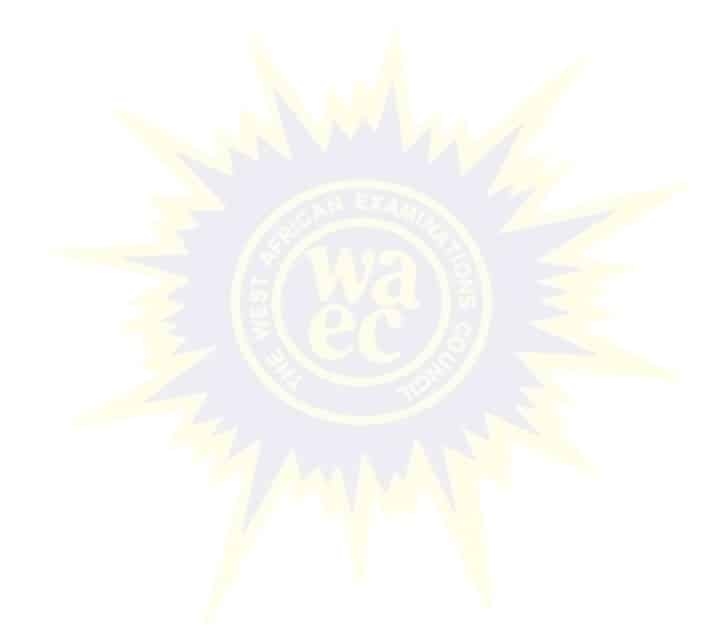
Chemistry
Paper 1 | Objectives | 52 Questions
WASSCE/WAEC MAY/JUNE
Year: 2001
Level: SHS
Time:
Type: Question Paper
Answers provided
FREE
No description provided
Feedbacks
This paper is yet to be rated

Paper 1 | Objectives | 52 Questions
WASSCE/WAEC MAY/JUNE
Year: 2001
Level: SHS
Time:
Type: Question Paper
Answers provided
No description provided
This paper is yet to be rated
There's no secret to passing WAEC or BECE apart from the merit of hard work and adequate preparation
12 Most Effective Ways to Pass Any Exams Without Studying Hard even when you don't have enough time.
Past questions are effective for revisions for all tests including WAEC, BECE, SAT, TOEFL, GCSE, IELTS
| # | Question | Ans |
|---|---|---|
| 1. |
Elements which belong to the same group in the Periodic Table are characterized by A. difference of +1 in the oxidation numbers of successive members B. presence of the same number of outermost electrons in the respective atoms C. difference of 14 atomic mass units between successive members D. presence of the same number of electron shells in the respective atoms |
B |
| 2. |
The atom of an element X combines with aluminium (13AI)? A. AIX 2 B. AI 2X C. AI2X 2 D. AI 2X 3 |
D |
| 3. |
The presence of unpaired electrons in an atom of a transition metal gives rise to A. paramagnetism B. nalleability C. ductility D. shiny appearance |
A |
| 4. |
What is responsible for metallic bonding? A. Sharing of electrons between the metal atoms B. Attraction between the atomic unclei and cloud of electrons C. transfer of electrons from one atom to another D. Attraction between positive and negative ions |
B |
| 5. |
Which of the following compounds is covalent? A. CaCI2 B. MgO C. NaN D. CH4 |
D |
| 6. |
A sheet of paper is placed in the path of a beam from a radioactive source. The emissions that pass through the paper consist of A. alpha particles and gamma rays B. alpha and beta particles C. beta particles and gamma rays D. alpha particles only |
C |
| 7. |
Which of the following features of a human skeleton can be determined by carbon-dating? A. Height B. Mass C. Age D. Race |
C |
| 8. |
Which of the following statements about ideal gases is/are correct? 1. The cohesive forces between their particles are negligible ll. The have no definite volume but occupy the volume of their containers III. They are not compressible IV. Their particles collide with loss of energy A. l only B. l and ll only C. l, ll and lll only D. l, ll, lll, and IV |
B |
| 9. |
P Total = F1 + P2 + P 3 + .........Pn' where P Total is the pressure of a mixture of gasses. The equation above is an expression of A. Graham's law B. Gay-Lussac's Law C. Boyle's law D. Dalton's law |
D |
| 10. |
Which of the following pairs of reagents reat to produce hydrogen? A. Zinc and concentrated trioxonitrate (V) acid B. Water and calcium dicarbide C. Copper and dilute hydrochloric acid D. Magnesium and dilute tetraoxosulphate (VI) acid |
D |
| 11. |
A mixture of calcium chloride and calcium trioxocarbonate (IV) in water can be separated by A. evaporation B. sublimation C. distillation D. filtration |
D |
Preview displays only 11 out of the 52 Questions